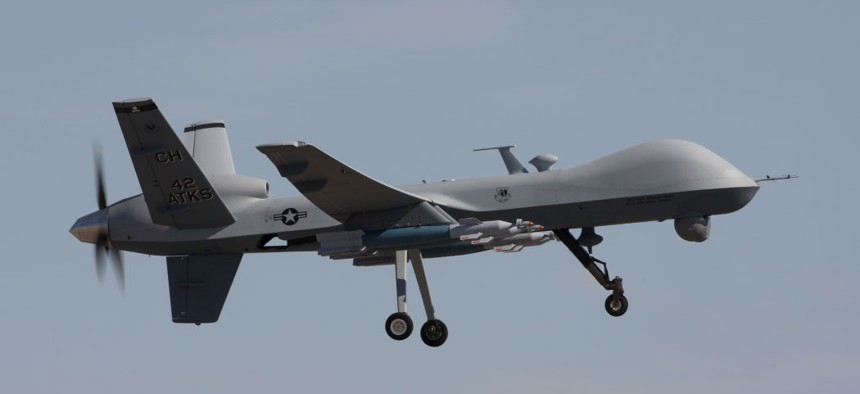Air Force orders upgrades for Reaper drone
The latest upgrades for the MQ-9 Extended Range Block 1, continues a program to improve features in older UAS.
The Air Force has been using Predator/Reaper unmanned aerial vehicles since the mid-1990s. And while it has continued to buy newer versions of the General Atomics-made aircraft, each with improved systems and capabilities, it continues to upgrade its older versions.
The Air Force Lifecycle Management Center has given General Atomics a $12.3 million order for upgrades to the MQ-9 Block 1 Reaper, under its Extended Range/ Electrical Safety Improvement Program depot activation Logistics Support Analysis.
The current basic ordering agreement was made last year, running four years with a ceiling of $233.2 million. It has been used for work such as software upgrades, under a $34 million order awarded in January, addressing corrections to threat, safety, interoperability issues that may have arisen from earlier hardware upgrades.
The Predator, first used in 1995, was originally a surveillance tool for the Air force and CIA. Later versions such as the MQ-9 were re-nicknamed the Reaper because of their added strike power. Newer versions, such as the MQ-9 Reaper Block 5, have added capabilities, such as secure communications, more power, better payload integration and newer weapons, as well as an auto-land feature that can reduce the manpower used to operate the aircraft.
Upgrades to the earlier versions are intended to help them maintain effectiveness. The latest order, specifically for the MQ-9 Extended Range, Block 1, addresses maintenance and repair procedures with regard to improving electrical safety. Work is expected to be completed by Aug. 31, 2018.




